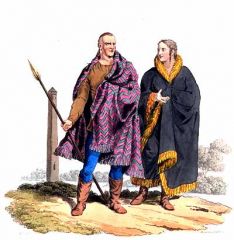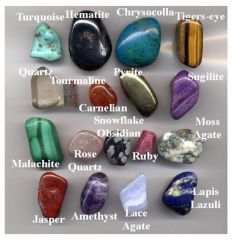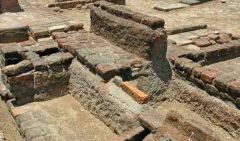![]()
![]()
![]()
Use LEFT and RIGHT arrow keys to navigate between flashcards;
Use UP and DOWN arrow keys to flip the card;
H to show hint;
A reads text to speech;
22 Cards in this Set
- Front
- Back
|
Aryans
|

Indo-European pastorals/nomads that considered themselves superior and called themselves "nobility" or Aryans
|
|
|
semi-precious stones
|

piece of attractive mineral, which — when cut and polished — is used to make jewelry or other adornments
|
|
|
ecological degradation
|
gradual destruction of nature
|
|
|
republic
|
a state or country that is not led by a hereditary monarch
|
|
|
varna
|
Varna means "arrangement" in the context of social hierarchies in Hinduism
|
|
|
jati
|
subcastes of the varna hierarchy, the jati were strictly tied to occupation
|
|
|
social mobility
|
difficult to achieve within the varna system, achieving upward mobility was infrequent but did happen and dissipated some tensions
|
|
|
ritual sacrifices
|
practiced extensively by the Aryans as a way to gain divine support, win military battles, produce large families, ensure long life, and guarantee abundant cattle herds
|
|
|
Upanishads
|
literature regarded as part of the Vedas and as such form part of the Hindu scriptures
|
|
|
samsara
|
efers to the cycle of reincarnation or rebirth in Hinduism, Buddhism, Jainism, Sikhism
|
|
|
moksha
|
refers in Indian religions to liberation from the cycle of death and rebirth and all of the suffering and limitation of worldly existence
|
|
|
Harappans
|

earliest known urban society in India, developed c. 7000 B.C.E. along the Indus river
|
|
|
sewage systems
|

All Harappan houses were equipped with latrines, bathing houses, and sewage drains which emptied into larger mains and eventually deposited the fertile sludge on surrounding agricultural fields
|
|
|
Vedas, Rig Veda, Vedic Age
|
oldest layer of Sanskrit literature[1] and the oldest sacred texts of Hinduism;ancient Indian sacred collection of Vedic Sanskrit hymns dedicated to the gods;the period in the history of India during which the Vedas, the oldest sacred texts of Hinduism, were being composed
|
|
|
administrators
|
most common form of political organization on the subcontinent, professional administrators were the foundation for chiefdoms which developed into regional kingdoms and permanent capitals
|
|
|
caste
|
hereditary systems of social grouping with associated exclusion and cultural pluralism in many parts of the world
|
|
|
brahmins
|
priests in the varna hierarchy
|
|
|
sati
|
coming from Sat in Sanskrit meaning "real, being, existing" as well as "true, honest, right"
|
|
|
Dravidians
|
a family of related populations that speak languages belonging to the Dravidian language family; came into great conflict with the Aryans forcing them to engage in a hierarchal society
|
|
|
Brahman
|
the unchanging, infinite, immanent, and transcendent reality which is the Divine Ground of all matter, energy, time, space, being, and everything beyond in this Universe
|
|
|
karma
|
the law of karma, the effects of all deeds actively create past, present, and future experiences, thus making one responsible for one's own life, and the pain and joy it brings to him/her and others
|
|
|
ascetic, asceticism
|
lifestyle change often with the aim of pursuing religious and spiritual goals
|

